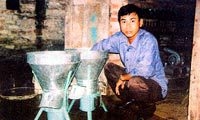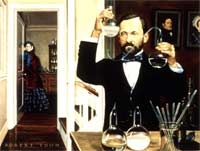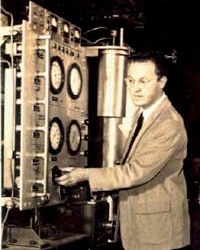In war, the innovation of weapons can lead to spectacular victories for one side and unexpected defeats for the other. However, there are also some very bizarre, even “crazy” ideas.
The Most “Crazy” Inventions According to Military Experts
Anti-Tank Dogs
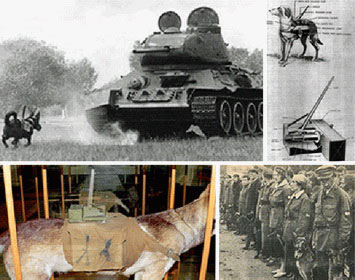
Anti-tank dogs were used by the Soviet Union during World War II to combat German tanks. These dogs were trained to seek food under tanks and were starved before each battle. When the time came, they were equipped with bombs on their backs, along with a lever that would activate when the dog crawled under the vehicle. When the lever fell back, the dog would explode.
Spiral Tanks
This is a type of tank that could traverse any terrain, produced by the former Soviet Union, known as SHN-1. This vehicle was designed to adapt to all types of terrain and withstand extreme weather conditions.
The tank featured a unique design that did not rely on wheels or tracks but instead utilized two spiral axles to facilitate movement. This design allowed it to navigate through snow, ice, and even water, where conventional vehicles could not operate.
The terrain of Siberia was particularly suitable for such spiral tanks. However, its capabilities were limited; while it could traverse rugged terrain, it was utterly “helpless” on flat ground. Additionally, its heavy weight, slow operation, and excessive fuel consumption led to its discontinuation.
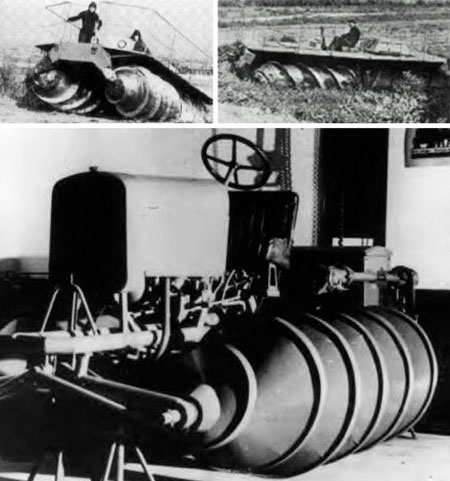
Curved Barrel Guns
Used in urban combat, these guns allowed users to shoot enemies hiding behind corners and concrete walls.
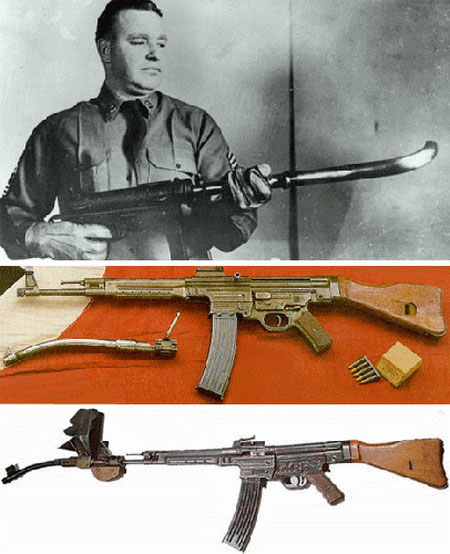
Tsar Tank
“Super Tank” Tsar is also known as “Mosquito Bat” due to its shape resembling a bat resting on a tree branch, featuring two large front wheels and a smaller rear wheel.
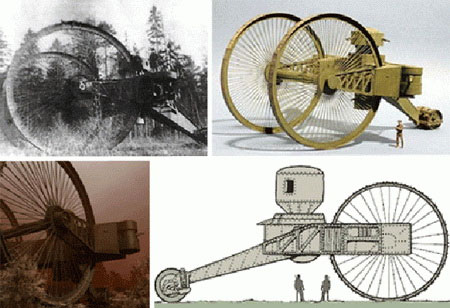
In 1914, Nikolai Lebedenko, a Russian military engineer, and his colleagues designed a unique and strange tank. It was called the Tsar Tank.
The idea for the Tsar Tank stemmed from the failure of the Imperial Russian Army against the German army in World War I. After the Imperial Russian Army’s defeat on the Eastern Front, the German army besieged the capital, Petrograd (now Saint Petersburg).
Military engineers proposed developing a new weapon capable of turning the tide on the battlefield, with Lebedenko’s design being the most prominent and catching the Tsar’s attention.
Lebedenko was invited by Nicholas II, the last Tsar of the Russian Empire, to the Winter Palace in Petrograd to present his weapon directly. The engineer brought along a wooden model of the tank he designed.
Tsar Nicholas II was delighted to see the model of this future weapon rolling across the carpet in the palace. The project was immediately approved by the royal family with a budget of approximately 250,000 rubles.
It was also referred to as “Lebedenko Tank“, and this massive war vehicle did not use a track system like conventional armored vehicles.
The two front wheels of the Tsar Tank had a diameter of nearly 9 meters each, while the rear wheels were significantly smaller (1.5 meters). The horizontal body of the war machine measured a total length of 12 meters. On the sides, the turret was equipped with cannons and machine guns. The total weight of a Tsar Tank was about 40 tons; it measured 17.8 m in length, 10 m in height, and 9 m in width, with a crew of 9 people and a speed of only 17 km/h.
In August 1971, the first tank was tested for the first time. However, during operation, the rear wheels tended to get stuck in soft ground and ditches, while the front wheels sometimes struggled to pull the entire vehicle out of the mud.
Due to its lack of mobility, when operating on terrain with many obstacles, such as marshy land and flooded areas, its massive size and uneven weight distribution made this machine nearly useless, and the super tank easily became a live target for the enemy.
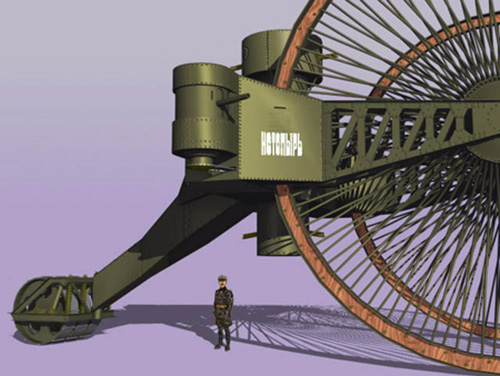 Too bulky for practical use.
Too bulky for practical use.
In reality, this massive war machine was easily targeted by the enemy’s heavy artillery when it operated on the battlefield.
After the mass production project of the Tsar Tank was canceled in 1917, one of the two massive tanks built by the Russians was left behind at the site of the initial tests, located about 60 km from modern-day Moscow.
In 1923, this special type of tank was dismantled for recycling scrap metal, marking the complete end of a unique weapon project by the Russians in World War I.
Anti-Aircraft Balloons
Anti-aircraft balloons were used in World War II. Their purpose was to hinder enemy aircraft flying at low altitudes to drop bombs by utilizing taut metal wires and explosive devices.
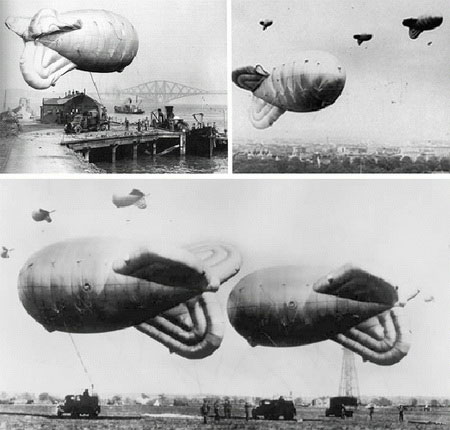
Habbakuk
Habbakuk was a project to create an aircraft carrier made from pykrete – a mixture of ice and wood pulp. The war ended before the project could become a reality.
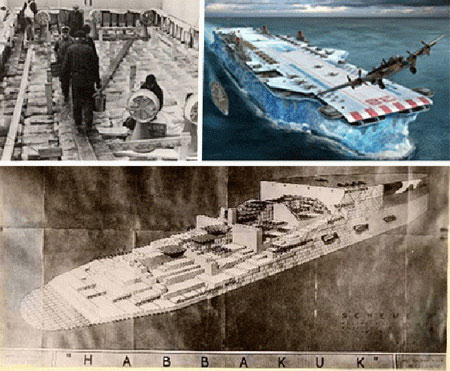
Bat Bombs
Bat bombs were invented by the Americans during World War II to combat Japan. The construction of these bombs was quite simple: place incendiary devices on Mexican free-tailed bats, then release them over enemy cities to destroy infrastructure.
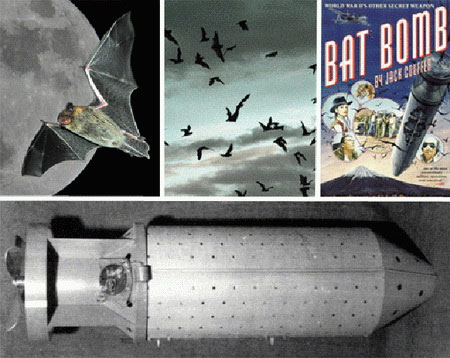
Goliath Tracked Mines
Goliath tracked mines were developed by Germany and used in World War II. These mines were designed to combat tanks and were remotely controlled.
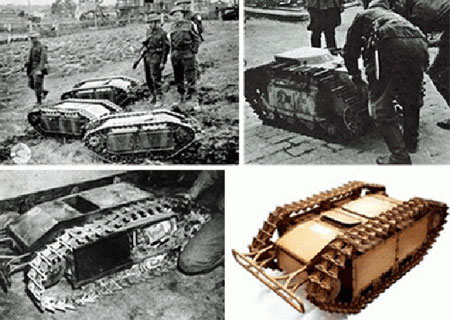
Flying Jeeps
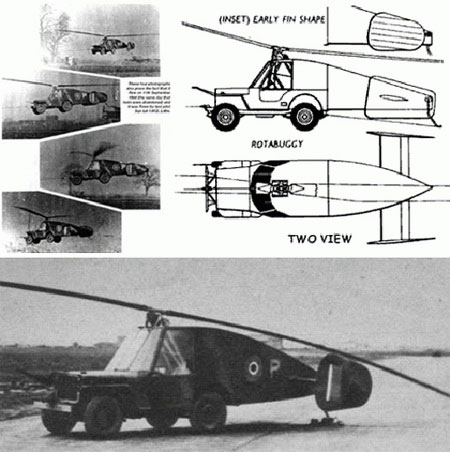
The inventor’s intention was to create a helicopter light enough to land on any terrain; however, this idea did not come to fruition despite multiple prototypes being created.
Flying Aircraft Carriers
This design remained on paper due to its vulnerability to being shot down, high fuel consumption, and limited advantages on the battlefield.
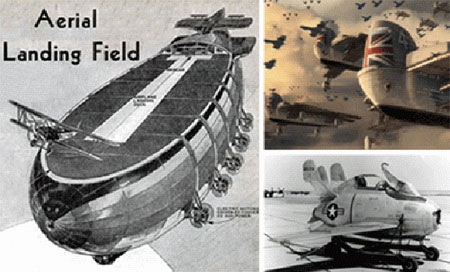
Armored Trains
To protect the railway system from attacks by Southern troops, the U.S. government ordered the testing of armored train cars equipped with thick iron plates on the front and sides. Windows on both sides allowed soldiers inside to fire out without fear of being hit.
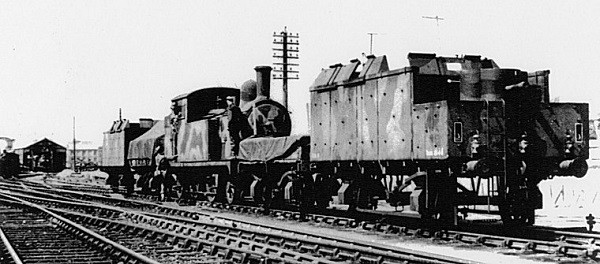
It was thought that these trains would be indestructible war machines, but in 1864, a cannon “accidentally” destroyed one of them.
In 1865, another armored vehicle was shot through, and this time, the iron plates deflected bullets from the inside, injuring the soldiers within. As a result, they were quickly abandoned.
Puckle Gun
The Puckle gun was invented by English writer and lawyer James Puckle. This invention was named a defensive gun, but it became known as the Puckle gun after its creator. Regardless, this type of gun faded away.
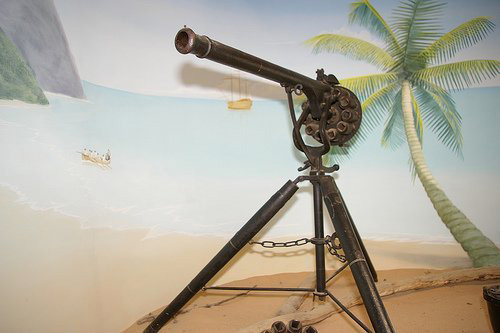
The multi-shot gun.
Originally, the Puckle gun was created to combat enemies of Christianity, followed by Turkish Muslims; however, it never had the opportunity to fulfill its intended mission.
This gun featured a tripod, a single barrel, and a revolving cylinder that could fire multiple shots, capable of firing 63 rounds in just 7 minutes, significantly outperforming conventional guns that could only fire 3 rounds per minute, similar to a military rifle.
The Puckle gun failed to attract investors and was never mass-produced or sold to the British armed forces.








































